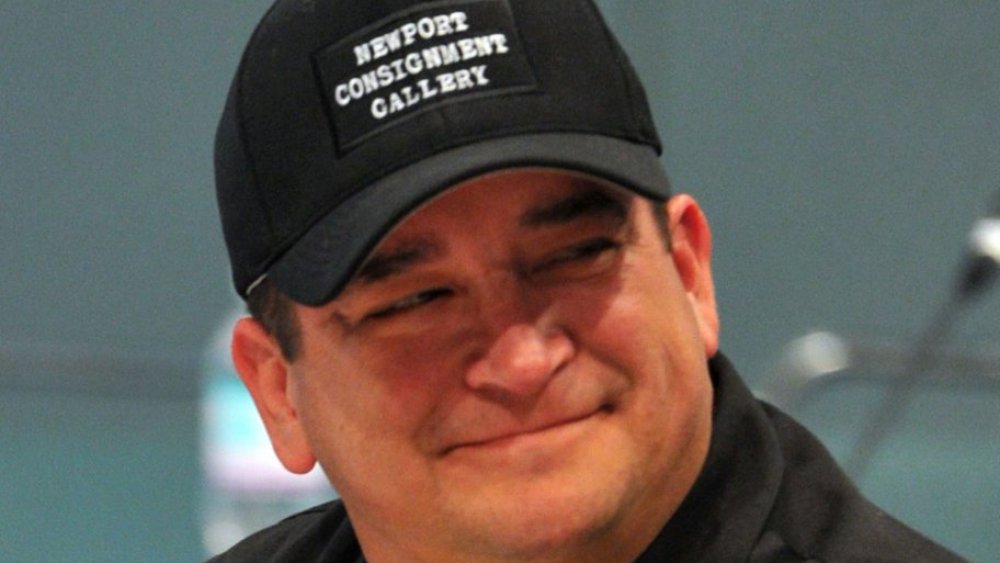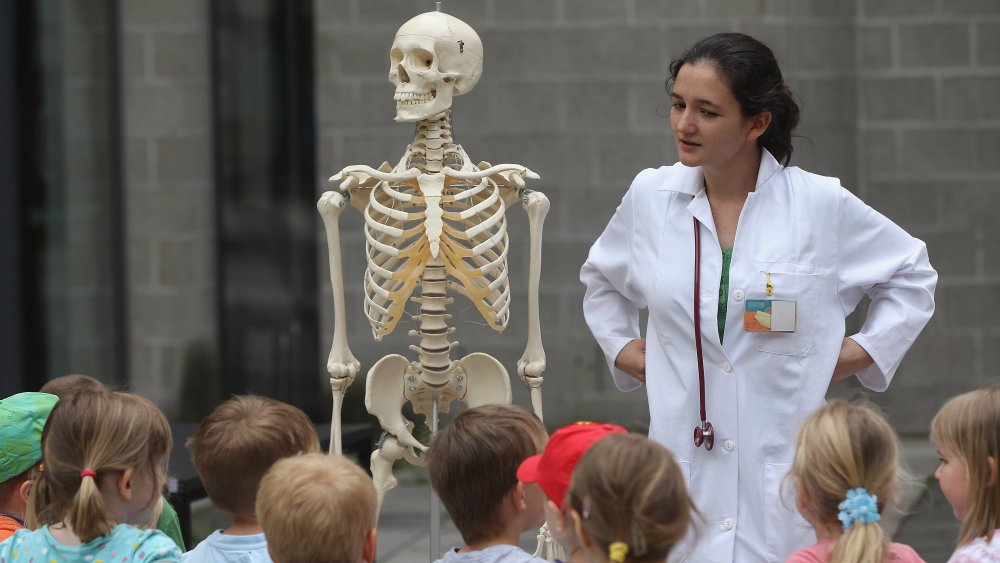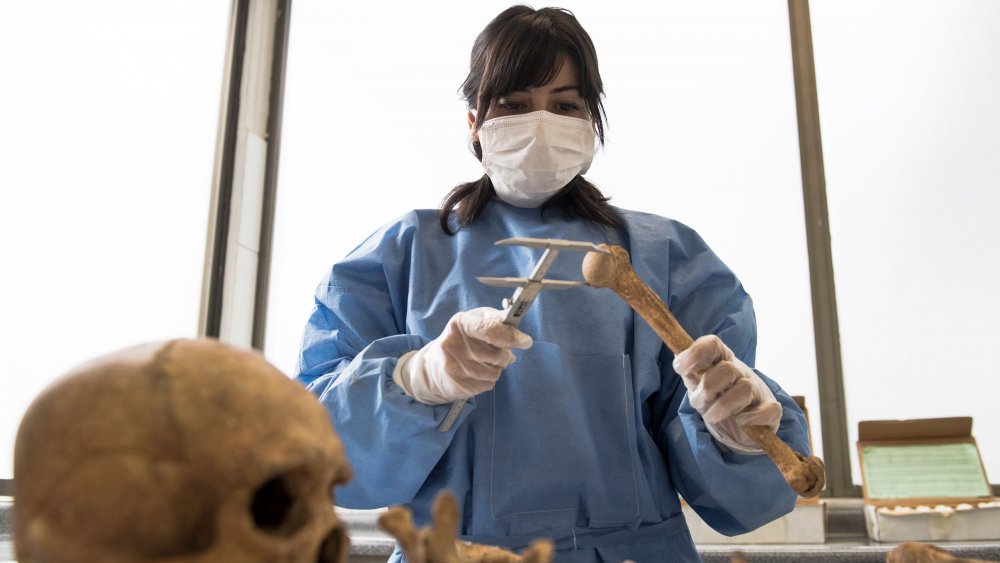The Creepiest Item Ever Found On Storage Wars
Anyone who has ever spent any time in an attic knows that storage spaces lend themselves to creepiness. Something about the combination of cobwebs, box-blocked sight lines, and the general forgotten aura that hangs over disused items has turned many a basement into the literal stuff of nightmares.
It's a bit of a shock that the hit A&E series Storage Wars doesn't stumble into squickiness more often. Across the shows' 12 seasons, we've seen bidders through boom and bust, but rarely do they find things that go bump. In fact, the creepiest ever moment across Storage Wars' 250+ episodes is easy to recall: the season 1 episode "Skullduggery," when bidder Dave Hester came across a pile of human bones.
Hester bought the unit at an inflated price of $1,350, going high on the price to intentionally undermine his fellow salvager Jarrod Schulz. Even though he fully expected to take a loss on the unit, Hester's day seemed to get even worse when he stumbled across a human skull and an unsettling number of bones.
The 'Storage Wars' skeleton had a non-creepy explanation
The cache of bones turned out to be less frightening than originally feared. Hester took the bones to an expert, worrying that they might be stored illegally — if not part of an even darker crime. Hester had no reason to worry, though. The expert cleared the bones as legitimate, noting that they were connected together with nylon and cleaned by professionals. The bones were meant for medical students, as a way for aspiring doctors to study the structure of the body.
Not only were the bones ethically sound, they were worth quite a bit of money. The demand for skeletons at universities and the necessary precautions to make sure they are ethically sourced makes an intact skeleton a great find. This item alone more than made Hester back his investment, fetching an asking price of $1,670.
The murky world of bone-trading
Professionally-sourced skeletons command such a hefty fee because the trade of human remains is — understandably — strictly limited. From the 18th century up until the mid-1980s, skeletons for medical study were primarily sourced from India. That came to an end when a trader was found in possession of well over a thousand child skeletons with no known origin, leading to a nationwide ban on exporting remains. Illegal bone smuggling still carries on in the country, with criminal exporting rings occasionally being caught by local authorities.
China followed suit in 2008, leading to increased demand for antique skeletons and a narrower market for new skeletons. Trade of bones became even more difficult when online marketplaces like eBay banned the sale of remains on their marketplace. Enthusiasts have moved toward grey markets on social media platforms like Instagram.
While there are still legal and legitimate purveyors of bones from donors, the trade is highly regulated. For example, only one retailer is allowed to sell new skulls in the United States. When Storage Wars' Dave Hester came across the unnerving and abandoned skeleton, he unwittingly came into a hot (if morbid) commodity. He ended the episode in the black, netting a profit of $525.


